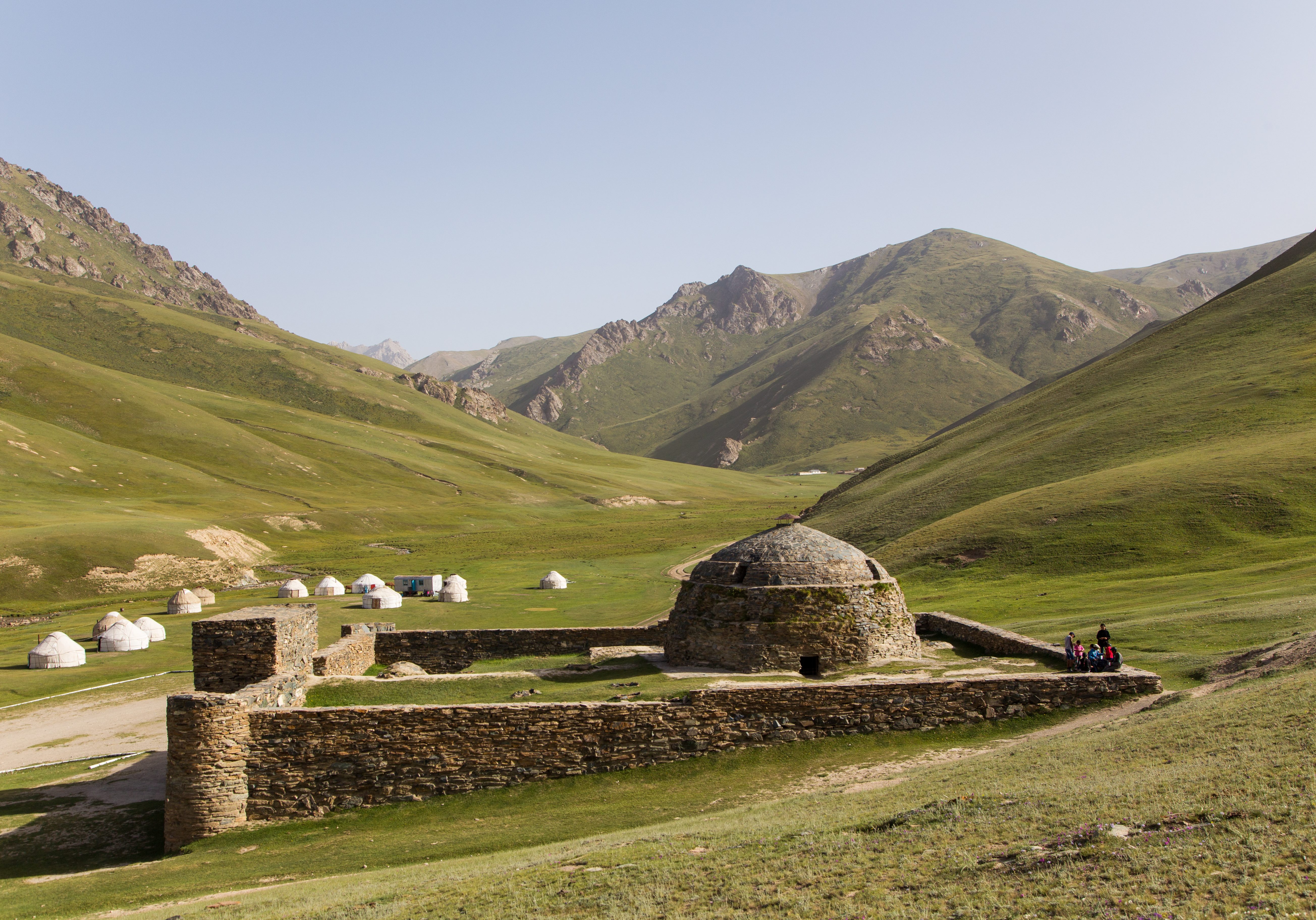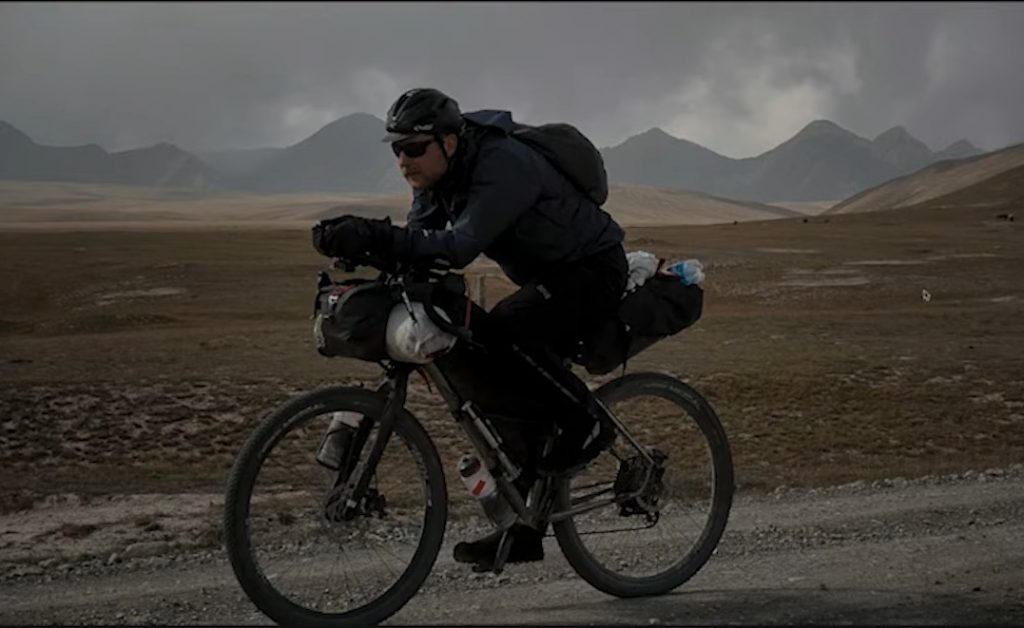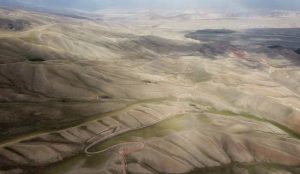Our adventure takes us to the ‘Stans’ found in Central Asia. Kyrgyzstan, a country that most have never heard of with a population of 6 million is a mountainous landlocked country bordered by Kazakhstan to the north, Uzbekistan to the west, Tajikistan to the south, and the People's Republic of China to the east. Its capital found to the North is called Bishkek.
Kyrgyzstan's history spans a variety of cultures and empires. Although geographically isolated by its highly mountainous terrain, Kyrgyzstan has been at the crossroads of several great civilizations as part of the Silk Road along with other commercial routes. Inhabited by a succession of tribes and clans, Kyrgyzstan has periodically fallen under larger domination. Turkic nomads, who trace their ancestry to many Turkic states such as the First and Second Turkic Khaganates, have inhabited the country throughout its history. In the 13th century, Kyrgyzstan was conquered by the Mongols; it regained independence, but was later invaded by Dzungar Khanate. In 1876, Kyrgyzstan became part of the Russian Empire, and in 1936, the Kirghiz Soviet Socialist Republic was formed to become a constituent republic of the Soviet Union. On 31 August 1991, Kyrgyzstan declared independence from Moscow and a democratic government was established. Kyrgyzstan attained sovereignty as a nation state after the breakup of the Soviet Union in 1991.




This beautiful country is often referred to the ‘Switzerland’ of central Asia, with the Tian Shan mountain range covering 80% of the country. The highest peak in the Tian Shan range is Jengish Chokusu, standing at 7,439 metres. This landscape is rugged, remote with stunning vistas. Jagged peaks tower over rolling green fields with twinkling blue streams and flower covered meadows. Roads turn to gravel tracks, then dirt gaining in elevation as you travel south of Bishkek, often climbing above 4,000 metres. The Kyrgyz people feel most comfortable on their horses having been living this lifestyle for centuries. It connects them to the breath taking beautiful landscape of the steppes and mountains. This is the backdrop for one of the world’s hardest bike races, ‘The Silk Road Race.’





THE SILK ROAD MOUNTAIN RACE
It’s the allure of this ancient land that led to the creation of the race an 1,900-kilometer single-stage race through the mountains and valleys of the land where the famous silk trade route once dominated. Founded in 2018 by ultra-distance enthusiast and current race director, Nelson Trees, the Silk Road Mountain Race is now in its fourth year.
It is an unsupported bike packing race through Kyrgyzstan held during the last two weeks of August. This year the course weaves through some of the most beautiful parts of the Tian Shan mountains, taking riders from Osh in the south of the country to Bishkek, the capital, via three checkpoints. One of these checkpoints is in the world’s largest Walnut forest, Arslanbob an area of outstanding beauty. As the race is unsupported, riders need to carry all their equipment, this includes sleeping gear and anything else they might need to complete the course. The race is a single stage, the clock doesn’t stop from when riders start until they reach the finish line. This means that everything is part of the race, eating, sleeping, stopping and fixing mechanical issues.
The support team will only provide information on resupply points and technical difficulties on the course. Silk Road Mountain Race is not hard because of one single factor, but rather because each rider faces a myriad of challenges. The riding may not be the toughest in the world, but with long sections without resupply, high altitudes, unreliable roads and weather conditions where temperatures can switch from searing heat to snow, in the same day, it will quickly push people to their limits. Riders must have good skills and the ability to look after themselves in the mountains.




KARL MAMOS
Aged 57, Karl told me he finds himself querying ‘why’ he is doing this race? After all he has a distinguished career behind him, has completed the Race Across America twice, winning the different categories that he had entered, the 4- and 8-man relay teams in 2018 & 2019 respectively.
Cycling gives him a sense of peace, tranquillity and freedom that few other sports do. It creates a level playing field for everyone, but it is the mental attitude that really counts, this ability in being able to dig deep, the ability to suffer and still persevere when the others around you are throwing in the gauntlet. This is his secret weapon against the 178 other riders taking part in this race.
During lockdown Karl found himself unable to compete in races but kept turning the crank in preparation for his first unsupported competition post pandemic. He registered for the short Pan Celtic race in 2021, a way to test the water. The race was 853 miles with 19,500 metres of climbing which he completed in 4 days 13hrs and 48 minutes. He states that in completing it “he learnt a bucket load of invaluable ‘newbie unsupported’ lessons and a lorry load of humility.”
He quickly learnt he had a passion for solo eventing which resonated deep within himself. Not satisfied with the Pan Celtic he started searching for the ultimate challenge and quickly found something that was top of his ‘bucket list.’ His aim is to have a ‘tilt’ at the race, I read it as completing the race safely. Having read multiple accounts of this race, all plans go out the window within the first 24hrs.
We asked Karl what was driving him to do this, his answer was simple: “The prospect of exploring a unique human and physical topography whilst testing myself tangibly is something that appeals to my deeper self. Mentally driving yourself forward whilst navigating in austere surroundings, conducting ever fluctuating speed, time and distance calculations, overlaid with victualling and rest considerations is something I find a real challenge. The level of satisfaction when you get it right, overlaid with the invaluable lessons learnt when you get it wrong; all whilst being exposed to extremes of both climate and altitude. What as they say is not to like?”

RACE DETAILS
WHEN: August 12th to August 27th, 2022
WHERE: Start in Osh & finish in Bishkek, Kyrgyzstan
WHO: Racers can ride solo or as a pair
DISTANCE: 1,900 kilometres with 37,000m of climbing. It is a fixed route with 3 staffed checkpoints.

FINAL WORDS



Due to the nature of the mountains, it is important that all riders have experience of this environment and can deal with the sudden changes, whilst remaining safe. Riding is only one part of this race, and each rider will be pushed to their limits in so many ways. They will need to trust in their gut instincts, their own logistics and navigational skills, be prepared for the unexpected and have that raw determination to dig deep. Half the field will not complete the race, it’s the way of the race.
The late-Transcontinental founder Mike Hall once said, “Nothing that’s worth anything is ever easy”, the Silk Road Mountain Race is a true demonstration of that sentiment. Something all the riders have in common is the ability to test their limits of their physical and mental capabilities with a clear singular objective, survival and the finish line. For most it is not about winning, but the ability to state, ‘I did it and survived.’ For these riders brave enough to face this gauntlet it promises to be the experience of a lifetime.

RACE CLIPS OF PREVIOUS LEGS
The video clips are from previous editions of the Silk Road Race, taken by those racing. It shows the hardships, friendships and life of these hardy adventurers as they tackle one of the world's hardest bike races in one of the last true wildernesses.

IMAGES FROM 2021 RACE
The images below were taken during last years race by Martin Moschek from Biketour Global










FOLLOW
SPONSORS
This wonderful race is sponsored by Komoot, Brooks and PedALed. If your company wants to join the list please contact the team using the above icons.











